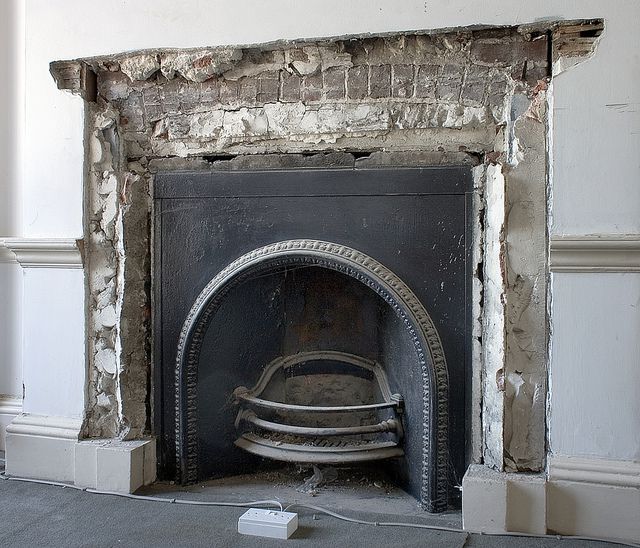In older homes especially, fireplaces can be found at the heart of most living rooms, and historically were the main source of heating. With the rise of central heating, however, many homeowners decided to conceal their original fireplace, covering up another place where the warmth could escape from.

In modern homes, however, fireplaces have been regaining their status as the main focal point of a living space. While many choose to go for a modern fireplace, many people are also opting for a more traditional design for their home. Reinstating a traditional wood-burning fire requires a significant amount of work, in order to open up both the fireplace and the chimney once more.
Before you begin
It is fairly simple to tell whether there was originally a fireplace built into your house, as you will often be able to see a chimneybreast and alcoves to the side of it. Before you consider opening up your fireplace, you should also check with a surveyor that the work you plan to do will not cause any structural damage to your home. You may need to call in a builder to do the work if the wall has been completely rebuilt, if the lintel is cracked, or if there is no lintel in place at all. You can also check to see if the chimney has been removed by looking in the loft for a flue or remnants of one, which could include chopped-off bricks or a strip of soot. The chimney and flue will also need to be reinstated completely if you’re planning on introducing a fully working fire into your home.
Initial steps
The first step you should take to uncover and unblock the fireplace is to find what is called the builder’s opening. The builder’s opening is a rectangular recess in the chimneybreast which the fireback is fitted to. These range in size from large ones found in pre-Georgian era houses to ones little more than three square-feet in size in Victorian houses. You can find this opening by removing the airbrick, removing the ventilation vent or taking out two bricks from about a foot above the floor. Hold a lit taper in front of this opening. If the flame is drawn towards the opening, it indicates that the chimney is clear, whereas if the flame remains still, it means that the chimney is obstructed in some way.
Another check you can carry out beforehand is to see if the fireplace hearth is still in place; you can do this by lifting the floor covering. The hearth is normally a concrete slab about half a foot deep, which is located not only underneath the fire but also out into the remainder of the room. If it is missing, the hearth will need to be rebuilt along with the other elements of the fireplace.
Reinstatement
Before you begin any of the work, make sure your floors and furniture are protected by covering them up. You can then begin the work by chopping off the plaster from where the centre of the fireplace would be, and then work outwards. You should then be able to see the outline of the opening appearing. This should be spanned by a lintel, which you should leave in place. Remove a full course of masonry a width of the opening underneath the lintel, and here you should be able to see a space with a fireback, otherwise known as a fireplace backpanel, where the fire would have once burned. For the most part, if the fireback is in good condition it can be left alone. Cracks in the fireback can be filled in with cement, but more extensive damage may require the help of a specialist.
Once you can see the outline of the structural opening, the lintel and the arch, you can remove all of the masonry within the outline, revealing a square opening where you can place your fire or stove. At this point, there are a few more checks that need to be carried out. Damaged arches or lintels will need to be repaired, while any flue or chimney capping will also need to be removed. Before you install a new fireplace, you should also get a chimney sweep to both clean and inspect the flue. The condition of the lining should also be checked and a smoke test carried out.
You may also need to apply some kind of false wall or dry-lining to the face of the chimneybreast. Over time, tar may have become absorbed into the brickwork, and the flue may have become damp, which could soak through into the plasterwork.
Image: Dominic Alves, available under Creative Commons
